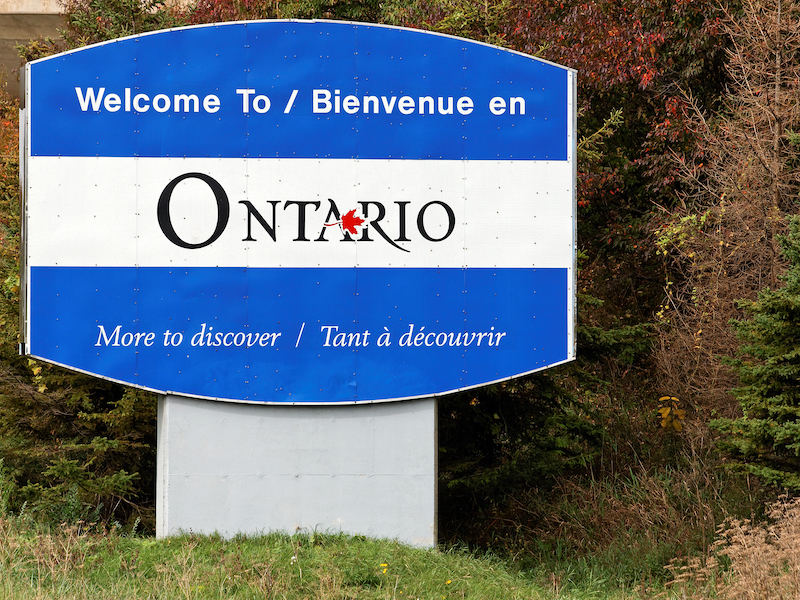
Ontario is delaying its path to balance as lethargic economic growth drags the province’s books further into the red, with a $9.8-billion budget deficit projected for the coming fiscal year.
Finance Minister Peter Bethlenfalvy acknowledged the challenging economic times Tuesday, saying life has rarely been this expensive, though his budget contains few new affordability measures.
“The pressure of managing a government budget pales in comparison to the pressures many families are facing as they manage their family budget in a time when everything is costing more,” Bethlenfalvy told the legislature.
“These are the real challenges and real problems of real life and real people, of making rent, of paying the bills, of affording groceries. And the best way to help people is by getting the big decisions right. Making smart investments. Watching the expense line. And most of all, keeping costs on people low.”
The deficit for 2024-25 is almost double what the province projected in the fall economic update. That document had also eyed a return to surplus the following year, which was already delayed a year from the 2023 budget. Bethlenfalvy now projects that a small surplus will not happen until 2026-27. In 2025-26, the deficit is forecast to be $4.6 billion.
The $214.5-billion budget forecasts real GDP growth of just 0.3% in 2024, and Bethlenfalvy said he has made a choice to increase the deficit rather than cutting spending or raising taxes or fees on Ontarians.
“We are going to follow through on a plan that is working — knowing that the higher deficits, compared to what we projected last year, will be time limited while the return on investment will be felt for decades,” he said.
The government proposed legislative amendments to support the implementation of a permanent target-benefit pension plan framework to take effect Jan. 1, 2025. It also said it would introduce regulations to support the framework by this summer. The Ministry of Finance consulted on proposed regulations necessary for implementing a framework last year.
Trade unions or industry associations often create multi-employer pension plans that provide target benefits, allowing members to switch employers while remaining in the same pension plan. The permanent target benefit framework would “help support the sustainability of these workplace plans and pave the way for more employers to offer them,” the government said in the budget plan document.
New money in the budget includes an additional $2 billion over three years for home and community care – which sees care provided at home or in a community setting by nurses, personal support workers and others – an additional $965 million for hospitals, a $200-million community sport and recreation infrastructure fund and $120 million more for autism therapies.
The Progressive Conservative government is also putting $100 million more into its Skills Development Fund as it hopes to flood the labour market with increasing numbers of skilled trades professionals.
As well, the province is planning auto insurance reforms, putting money toward four police helicopters for Greater Toronto Area forces, supporting a new York University medical school focused on training family doctors, and increasing the eligibility threshold for a program that helps families with the cost of electricity.
NDP Leader Marit Stiles said there are many gaps in the budget, which she said doesn’t put enough toward affordable housing or boosting primary health care.
“I see nothing here that’s going to support Ontarians in their day-to-day lives,” she said.
In addition to the sluggish economy, the budget document also cites higher public sector salaries, increased infrastructure spending and gas tax relief as reasons for the deficit figures.
Bethlenfalvy and Premier Doug Ford announced earlier this week that a 5.7-cent per litre cut to the gas tax first introduced in 2022 that had been set to expire in June will now continue to the end of the year. The budget shows that move is costing the treasury $620 million.
The government is spending billions more on broader public sector compensation, particularly in health and education, after its wage restraint law was declared unconstitutional last month. The province has mostly relied on large, multi-billion-dollar contingency funds to pay for retroactive payments it has had to make, but going forward the contingency fund is set at a more standard level of $1.5 billion.
Ontario’s finances on the revenues side have also deteriorated since the last budget, Tuesday’s document reports, saying they have decreased by $7.3 billion for the upcoming fiscal year, due to both slower growth and lower tax assessment information from the federal government.
As well, a recent federal announcement of a two-year cap on international student study permits will negatively affect the province’s books since colleges’ finances are consolidated into the province’s financial statements.
Colleges have increasingly relied on the much higher tuition fees paid by international students to bolster their finances in the face of low operating funding from the province and a multi-year domestic tuition freeze.
The budget shows the province’s net debt rising above $439 billion in the upcoming year.
For this fiscal year, the province is expected to end 2023-24 with a $3-billion deficit, an improvement from the $4.5-billion expectation Bethlenfalvy had just a month ago when he presented the third quarter finances.